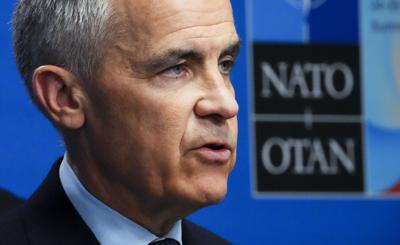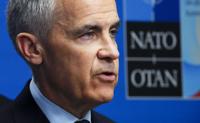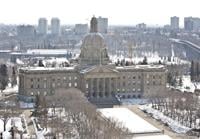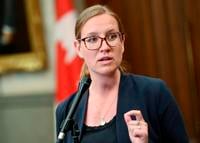OTTAWA - The Department of ´şÉ«Ö±˛Ą Defence will not be spared from Prime Minister Mark Carney's cost-cutting drive — even though overall defence spending is set to balloon in the coming years.
Finance Minister François-Philippe Champagne sent letters to cabinet ministers Monday asking them to find savings of 7.5 per cent in their budgets starting in fiscal 2026, a spokesperson for the minister confirmed.
That savings target rises to 10 per cent the following year and 15 per cent in 2028.
The Globe and Mail first reported on the plan to sharply reduce program spending across the government.
Champagne's spokesperson Audrey Milette said the Department of ´şÉ«Ö±˛Ą Defence will also have to find savings.
She said the policy speaks to Carney's promise to balance the operating side of Ottawa's budget in the coming years while rapidly increasing defence spending to meet NATO targets.
Carney's defence spending announcement in early June amounts to an extra $9.3 billion in spending this year. He made that announcement before NATO allies pledged at last month's summit to ramp their defence and security budgets up to five per cent of GDP by 2035.
Defence Minister David McGuinty confirmed to journalists Monday that he received Champagne's letter but offered little indication of where cuts could be made in his department.
"I haven't had a chance to talk to my colleague, but I have been part of no discussions with respect to, for example, significant social services cuts at a federal level in order to achieve our defence priorities," he said at a press conference at CFB Trenton.
"The question of redistribution of expenditures is one I would much rather leave with the minister of finance."
Ottawa is preparing to present its 2025 budget in the fall after forgoing a traditional spring fiscal update.
Since taking over the Liberal leadership earlier this year, Carney has touted plans to "spend less" and "invest more" to build Canada's economy in the face of U.S. trade aggression.
The Liberal platform in April's federal election projected a deficit of $62 billion this year and promised to balance the operating budget by 2028 while continuing to run a deficit in capital spending.
In the absence of a spring budget or specific outlines for cuts, the parliamentary budget officer and other critics have argued the federal budgetary deficit could grow beyond that level this year, thanks to Ottawa's recent spending announcements.
The union representing public service workers warned Tuesday of widespread job losses and reduced services if Ottawa's planned cuts materialize.
The Public Service Alliance of Canada said in a media statement that while it's ready to work with the federal government to find savings across the public sector, the cuts as proposed could lead to shuttered programs and longer wait times for things like passports.
Meanwhile, on Wednesday, Treasury Board President Shafqat Ali announced a new review to cut red tape across the public service in a bid to curb overregulation holding back the ´şÉ«Ö±˛Ą economy.
Ministers are expected to review regulations in their portfolios and propose actions to cut red tape by removing outdated rules, reducing duplication with provinces and generally making it easier to deliver services.
Ministers' reports on next steps for cutting regulation are due within 60 days.
Michael Sabia, tapped last month to head the Privy Council Office in Ottawa, said in a letter to public servants on Monday that the federal bureaucracy must streamline its operations because "internal processes have become quite complicated."
"Trying to simplify processes is going to be a priority. I know it is easier said than done. But it has to be addressed," he wrote.
— with files from Kyle Duggan
This report by ´şÉ«Ö±˛Ąwas first published July 7, 2025.








































